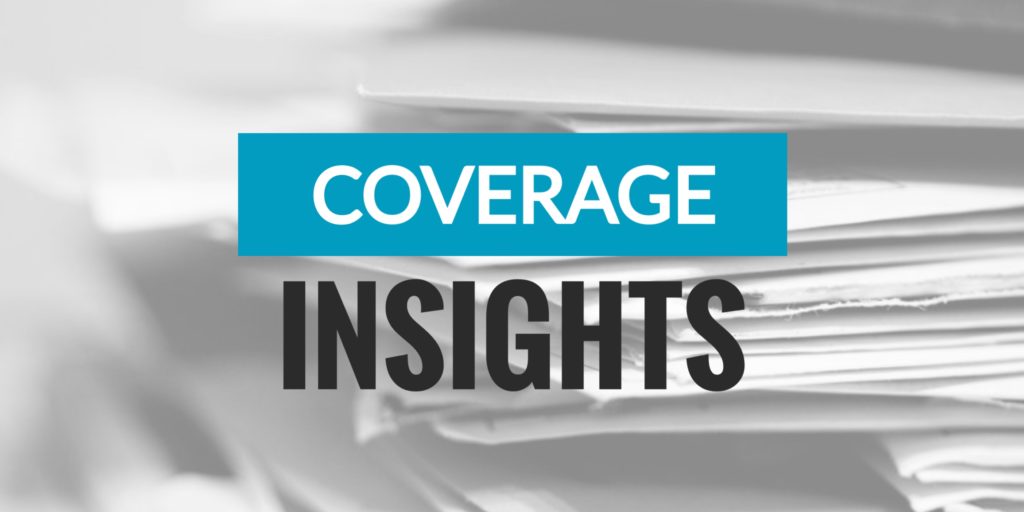
Maintaining adequate insurance coverage is an important practice within any organization.
A key element of ensuring a robust insurance program is to take steps to avoid experiencing potential gaps in coverage during policy transition periods.
One common cause of such coverage gaps stems from claims that are reported after a policy expires. Fortunately, that’s where an extended reporting period (ERP) can help. Review the following guidance for more information on ERPs and when to consider implementing this offering.
ERPs Explained
An ERP—also called “tail insurance”—is a policy feature or endorsement that can provide your organization with an extended period of time to report a claim after your policy concludes. In other words, an ERP allows claims to be reported for a set time period following the policy expiration or cancellation date—as long as the cause of the claim itself took place within the policy period.
ERPs can be applied to claims-made policies, but not occurrence-based policies. This is because occurrence based policies already provide coverage as long as the incident that led to a claim took place during the policy period, making an ERP unnecessary. ERPs are most commonly applied to commercial general liability (CGL) coverage and professional liability coverage policies— seeing as liability-related claims can sometimes arise months or even years after the policy has expired.
Generally speaking, there are two types of ERPs:
- Basic ERPs—A basic ERP—which is sometimes offered free of charge by your insurer—would allow your organization to report a claim within 30 to 60 days following the cancellation, nonrenewal or expiration of your policy. For example, if a customer fell and injured themselves on your organization’s property during your CGL policy period, but then filed a lawsuit against your organization for allegedly causing the injury two weeks after your CGL policy expired, a basic ERP could be applied.
- Supplemental ERPs—A supplemental ERP—which usually must be purchased from your insurer—would allow your organization to report a claim for a longer period of time after the conclusion of your policy. This period typically ranges between one and five years, but in some cases, unlimited periods are also available. For example, if that same customer experienced long-term complications from their injury on your organization’s property and filed a lawsuit three years after your CGL policy expired, a supplemental ERP could be applied. Nevertheless, be aware that some insurers only offer supplemental ERPs if they terminate your policy.
In terms of the cost of ERPs, insurers usually charge a fixed percentage of your final policy premium. Some ERPs have fixed periods, which means that your organization can only apply a single ERP before your coverage officially expires. However, other ERPs have renewable periods, which means that your organization can renew the ERP (if needed) for an extra fee.
It’s important to keep in mind that ERPs are a policy feature. They are not a separate form of coverage, but rather an additional insurance offering that can be applied to an existing, claims-made policy.
When to Consider an ERP
ERPs can be useful to any organization that is looking to fill a potential coverage gap caused by a canceled or expired claims-made policy. Additionally, ERPs can be especially helpful in certain situations.
For instance, seeing as ERPs are most commonly applied to CGL and professional liability policies, organizations that conduct operations with increased liability exposures (e.g., contractors, retail stores, restaurants or other professional service providers) may be more likely to benefit from applying an ERP to one or more of their liability-related policies.
You may also want to consider implementing an ERP if you are planning on switching your coverage to a new, occurrence-based policy. That way, you could remain protected in the event that a claim arises that occurred during your former, claims-made policy period.
We’re Here to Help
Every organization is different. That being said, it’s important to review your organization’s unique operations and exposures to determine whether an ERP is necessary for any of your commercial insurance policies.
Thankfully, you don’t have to navigate this decision alone. We’re here to help. For additional coverage guidance and solutions, contact us today.
This Coverage Insights is not intended to be exhaustive nor should any discussion or opinions be construed as legal advice. Readers should contact legal counsel or an insurance professional for appropriate advice. © 2020 Zywave, Inc. All rights reserved.
Latest Property & Casualty Insurance Posts:
- The Importance of Reporting All Workers’ Compensation Claims
- Are Volunteers Covered by Workers’ Compensation Insurance?
- Workers Compensation Insights: Assigned Risk Plans
- Determining Whether Employees’ Injuries and Illnesses Are Work-related
- The Importance of Communicating With Employees During Workers’ Compensation Claims

